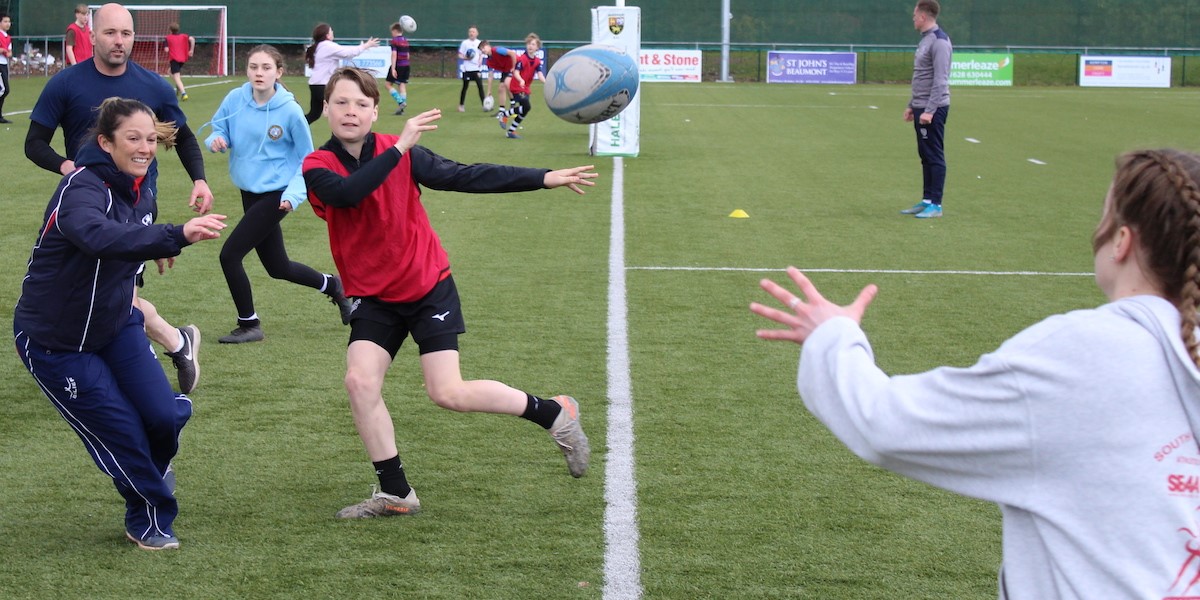Sign-up to receive all the latest news from England Touch
Parallel pathways for minimal and full contact rugby can work well for schools

An edited version of this article by England Touch Head of Communications and Marketing Chris Wearmouth has been published in this month's edition of Rugby World, with Chris writing in a personal capacity.
When you’re overseeing a quiet club shop on a Thursday evening in mid December you have time to talk to your handful of customers when they come in through the door. Not just to upsell them a mug, or tell them that they should really go a size larger in the heritage shirt because it’s snugger than the veritable bug in the rug, but also to engage them in actual conversation, to find out what is making them tick.
The conversation which stuck out on the night in question was with one of the people involved in coaching rugby at Warwick School, one of the leading independent schools in the West Midlands.
Shorn of full contact training due to coronavirus restrictions, he told me, they had turned to minimal contact in training, playing with a variety of rules to hone the youngsters’ core skills. Not the full Ready4Rugby, or the structured six-a-side Touch with the 7m offsides and turnovers whenever the ball hits the deck, but with rules designed to hone whatever skill the coaches wanted to work on that day.
The lack of contact during the pandemic has taken away the essence of rugby, it could be argued. But what if it has, in fact, opened up the delights of oval ball sport to those youngsters who don’t find it enjoyable to be the smallest player stuck out on the wing in the freezing cold and rain, or who recoil in horror at the prospect of having the bejesus tackled out of them by an early-developing behemoth of a second row.
Take the full contact out and all of a sudden there is the knowledge that if you get the ball into your hands there is the chance to run, to express yourself, to actually spend the hour of that games lesson getting some enjoyment out of your rugby.
An experienced coach who had coached plenty of age group teams told me recently that in his experience the majority of players in his squads were born in the months between September and January, in other words the first six months of the school year.
Physically these players have that innate advantage over those born later in the academic year, especially in those all-important mid-teen years hallmarked by growth spurts, acne, and - more importantly - deciding both your academic future and those sports which capture your attention.
If members of this second group are not enjoying themselves on the pitch then they will be lost to the sport, scarred by their experiences.
But what if they instead were kept engaged, perhaps by schools running a minimal contact programme in parallel with their full contact programme. What if they were allowed to aim for representing one of the age group teams that England Touch enters into the annual European Championships? What if, armed with those enhanced core skills, they then came back into the full contact version of the sport once they were that little bit older and physically mature, confident in their ability to contribute to the team?
This, of course, is not even taking into account the question of how best to maintain oval ball sports in an era of increased concern regarding concussions among younger individuals, compounded if a school does not have a fully qualified RFU coach. There are alternatives, such as England Touch’s burgeoning schools support, which has come into more demand during the pandemic.
Transitions from tag into contact have always been sudden. On August 31st your child has the natural leveller which comes from tag, then on September 1st the physical discrepancies start to be taken into account.
Don’t get me wrong, this is not a call for contact rugby to be banned in schools, or anything like that. But there is another way of approaching what is becoming a challenging situation in need of some lateral and imaginative thinking.
So why not consider extending this transition for another few years? You never know, rugby - of whatever form - may just start to get that little bit more popular.
The current issue of Rugby World is available in newsagents, or digitally via the Rugby World app.







